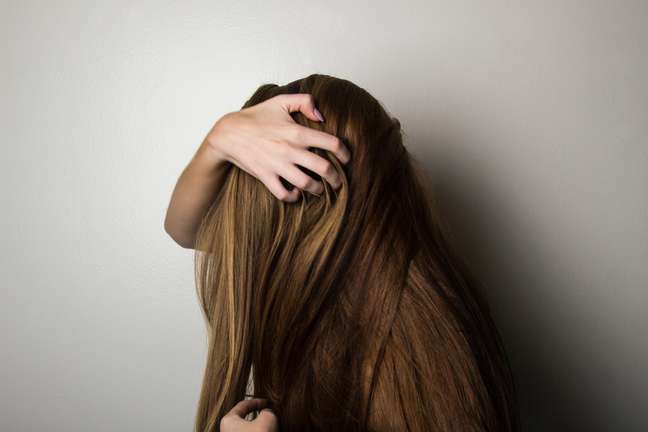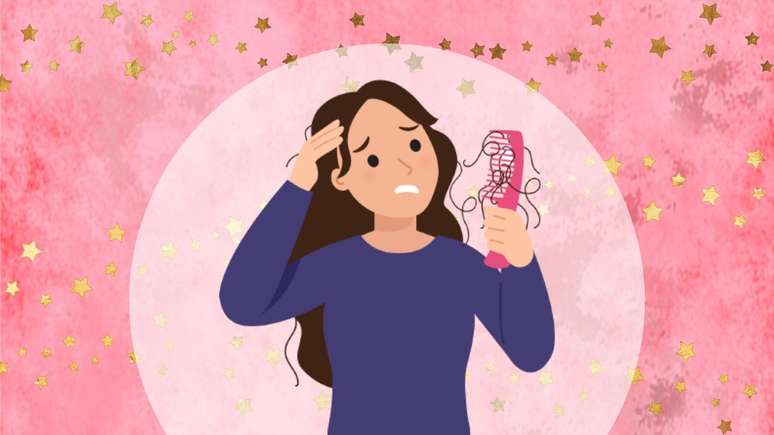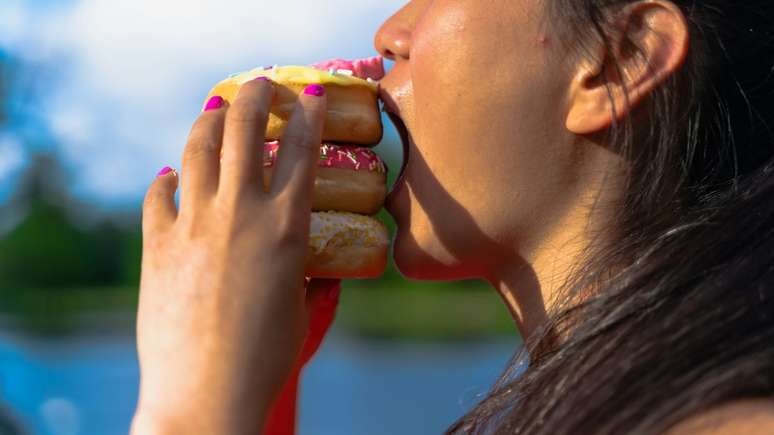Caused by the accumulation of products in the hair, hair hydrophobia leaves the hair lifeless and brittle.
Of all the terms we hear when it comes to hair, “hair hydrophobia” doesn’t seem like one of the friendliest, right? And he isn’t. This is a condition that does not occur for health reasons, internal to the body, but for external factors: it is simply the excess of products accumulated in the scalp.

According to the hairdresser Luigi Morettoa capillary hydrophobia It happens when the hair loses its ability to absorb water (i.e. to stay hydrated!) Due to excess products on the hair and scalp.
“The hair is dull, heavy, with a greasy texture, without movement … in some cases even with white crusts!” He explains to Boa Forma.
And the effects are not “only” these. The damage can become quite deep, even causing the threads to break. Since they are mostly made up of water, in cases of hair the first process goes through hydrophobia it is dehydration – that is, lack of water.
“If the thread has a lot of accumulation residues, it does a ‘covering’ process, not allowing the water to penetrate,” continues the professional. “With this, the thread becomes weaker and weaker, losing nutrition and, in the long term, suffering very serious damage”.
Contrary to what one might think, the hydrophobia it doesn’t just happen because a person doesn’t wash their hair. Washing often takes place too, but it is not done correctly, contributing to the build-up of products.
Aside from that, there is also the question of the products themselves. We often use creams and other substances on our hair that have petro-derivatives in their composition (chemicals such as liquid paraffin, silicones, petrolatum and synthetic fragrances), which, while developing specific functions in the hair, can also become aggressive to the hair when used. in batches.
HOW TO TREAT HAIR HYDROPHOBIA?
As much as this condition can cause significant hair damage, it is treatable and can be reversed. The first step, according to the hairstylist, is to wash your hair thoroughly with the help of an anti-residue shampoo (or detox shampoo).
From there, the most important point is to invest in a good hair care routine that, above all, avoids overdoing it.
“The amount of product you use makes a difference,” he says. “For finishing, it is always a little and with damp hair for better absorption of the strands and never overlapping products.”
For him, this correct routine also includes at least 2 or 3 washes a week, depending on the type of hair, and the use of masks to maintain hydration.
“A very important tip that many don’t talk about is to always use conditioner on the tips after rinsing off the treatment mask, so the correct sequence is shampoo, mask and conditioner – and, of course, a good finisher to top it off”, he explains.
In this case, the trick is to rinse the moisturizing mask well to prevent the product from accumulating on the strands. On the other hand, it is also worth getting into the habit of reading the labels of the products you use to avoid petro-derivatives if possible.
Source: Terra
Benjamin Smith is a fashion journalist and author at Gossipify, known for his coverage of the latest fashion trends and industry insights. He writes about clothing, shoes, accessories, and runway shows, providing in-depth analysis and unique perspectives. He’s respected for his ability to spot emerging designers and trends, and for providing practical fashion advice to readers.







